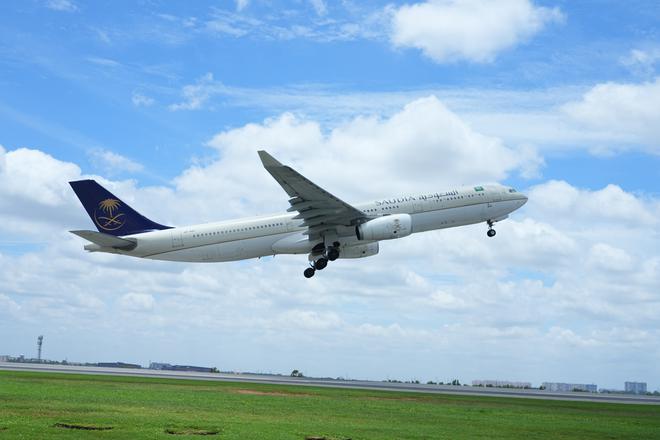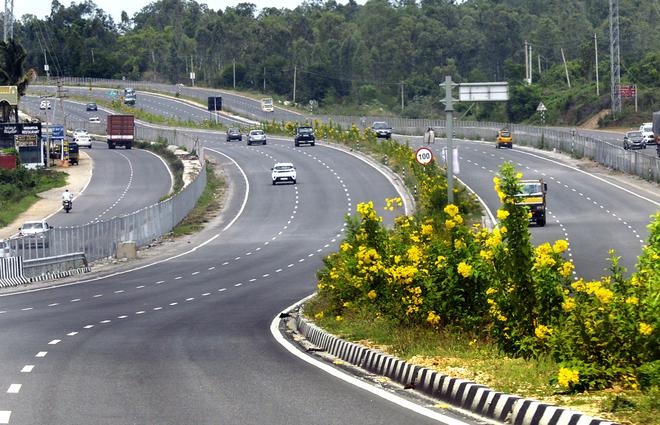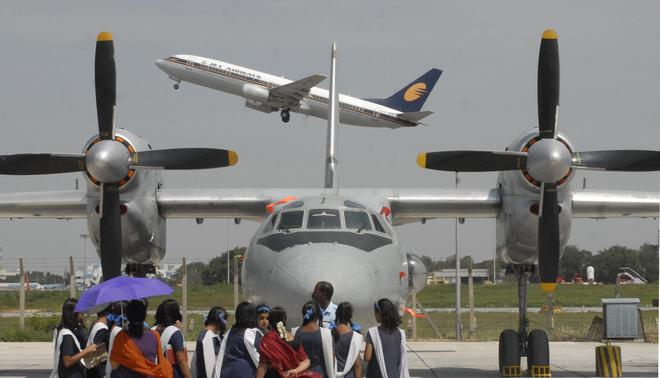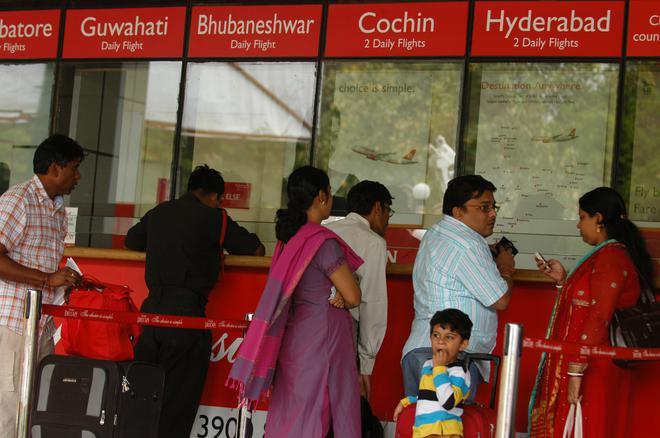In an explosive multi-pronged growth mode, Bengaluru’s massive population and industry had always mandated at least two fully functional commercial airports. With the Bangalore International Airport Limited (BIAL) Managing Director Hari Marar articulating that need recently, the spotlight has shifted back to an old proposal to build a “third airport” after reopening the old HAL Airport.
First, the grim statistics. Already the country’s third busiest, the Kempegowda International Airport (KIA) will exceed its structural capacity of 92 million passengers per annum (MPPA) by 2032-33. That is less than 10 years from now. After a COVID-induced dip of 31.9 MMPA in the financial year 2022, the airport is all set to spring back with a projected 40 MPPA by the end of FY 2023, a whopping 25% increase.
BIAL’s suggestion came after the Karnataka government reportedly turned down a plan to build a third runway at KIA. But Hari Marar did not make any mention of the HAL airport, which BIAL has steadfastly refused to reopen, citing a 150 km-radius contractual agreement. The contract bars commercial flights from operating at the HAL airport — located within a 150 km radius of KIA — for 25 years after the new aerodrome opened in May 2008.

Build along Mysuru Road corridor
This is why a 2020 proposal by the Bangalore Chamber of Industry and Commerce (BCIC) to build an airport between Bengaluru and Mysuru becomes critical. Beyond the rising passenger traffic, BCIC had cited the huge anticipated growth in cargo from the industrial corridor in the vicinity. A new airport, the report said, would ensure rapid growth and development in the southern catchment, including Ramanagara, Bidadi, and Channapatna along the Mysuru Road corridor, besides Electronics City and Whitefield.
“We had proposed the new airport somewhere in the triangle between Bengaluru, Channapatna, and Hassan. The Mysuru Road corridor was suggested for multiple reasons. One is the expressway that now assures good, quick transit. You also have a railway system to leverage. That takes care of surface connectivity to the airport,” says Devesh Agarwal, former BCIC president who had worked on the report.
Cargo, beyond passenger traffic
Airports do not serve passengers alone. He explains, “If you take Memphis, Anchorage, Delaware, Bonn, or Amsterdam, all these airports have more cargo traffic than passengers. Cargo is a very important component of the economy. Looking to expand to a one trillion dollar economy, Karnataka has to ensure connectivity to a high value-add industry in the region.”
Typically, food processing, precision engineering, electronics, and floriculture figure among high value-add industries. “Mysuru is becoming a hub for these. Hassan is one for food-processing and floriculture. The industry is spread all around Bengaluru. The government says to decongest Bengaluru, how are you going to do it? By building infrastructure that will support the IT industries or manufacturing industry to move to Hassan, Mysuru. They cannot move until you give them proper connectivity,” Devesh contends.
The report referred to Mysuru’s emergence as an alternative city to Bengaluru in the IT sector. With a significant number of IT firms expanding to the north of that city, the expressway, with its 90-minute travel time to Bengaluru, could be the right connectivity option to a new airport. Currently, navigating the densely populated stretch along Bengaluru to Mysuru and the city proper is the only way to reach KIA, located far up North in Devanahalli.

Exponential air traffic growth
Till 2020, Bengaluru’s air traffic had grown at a compounded annual rate of 8.3% over the previous 18 years. Passenger volumes quadrupled from FY 2002 to FY 2010 and thereafter trebled from FY 2011 to FY 2020. Even adjusting for the COVID impact, the city’s air passenger volumes were projected to double again by the next decade. The number of air traffic movements (take-offs and departures) also saw an exponential increase during the period cited.
Beyond the obvious economic growth of Bengaluru, what explains the massive growth in air traffic from the city? Mobility analyst Sanjeev Dyamannaver, who closely follows developments at KIA, draws attention to the perceptible lack of growth in inter-city connectivity options.
The high growth in the IT hub, he says, has not translated to a corresponding growth in rail and road connectivity. “For instance, a high-speed rail service is not even planned in the near future between Bengaluru and Mumbai. There are no freight corridors. Access to the coast is very limited, you have to reach Chennai, Mangaluru or Kochi by air or depend on roads through ghat sections,” he explains.
The railway is stagnating despite an increase in capacity and infrastructure. “Inter-city services have not been improved at all. The travel time between the city and Hyderabad is still high, even with the introduction of the Vande Bharat trains. There is an expressway linking Mysuru, but not with Chennai or Hyderabad. All these have increased the load on KIA,” elaborates Sanjeev.

Potential of a reopened HAL airport
For years, KIA had struggled with road and rail connectivity issues. The airport metro is still another two years away from commercial operations. As traffic on the Airport Road mounted and the Hebbal flyover became a chokepoint, the demands to reopen the HAL Airport — at least for domestic flights — persisted. Could this be the right time to revive it?
“Today, if a flight from Chennai files a flight plan to KIA showing HAL airport as the next alternative, they will reject that flight plan. Why is the Airports Authority of India (AAI) unwilling to allow HAL airport as a secondary airport or a diversion airport for KIA,” wonders Devesh.
A second airport within the city makes sense for short-haul flights on the Bengaluru-Chennai or Bengaluru-Coimbatore routes. As Devesh points out, there is also fuel-saving potential. “Today, flights from Chennai or Coimbatore have to carry twice the fuel because the alternative to KIA is Chennai,” he says.

No safety concerns
Safety and infrastructural gaps could be cited as reasons. But these are out of the question since the President of India, the Prime Minister, and heads of State often land here in big planes without any safety concerns. The disused infrastructure at the airport could be given a makeover in quick time.
But even if it is refurbished, HAL Airport cannot be used for day/night commercial operations, reminds Sanjeev. “The HAL runway can only be used in a limited way, during night time. It has to cater to test flights by the Light Combat Aircraft (LCA) and other IAF planes. But the airport can be used to park bigger aircraft. That way, pressure on KIA can be reduced,” he says.
Building an entirely new green-field commercial airport, he feels, could run into land acquisition issues. The fertile land along the Mysuru Road corridor could be problematic. Instead, BIAL should look at optimizing underutilized runways around Bengaluru.
Upgrading runways elsewhere
Sanjeev’s point is this: Why not upgrade the Hassan and Mysuru airports and look at how best the airstrip in Kolar, run by the Defence Research and Development Organisation (DRDO), can be used to land smaller regional aircraft? “Hassan airport is currently used only for cargo operations. But Hubballi airport, with vastly improved connectivity, could be a model to emulate,” he notes.
On the Hosur Road side, the government could explore a partnership with Taneja Aerospace to use the Hosur Airport. This, he is convinced, can cater to the air travel needs of Electronic City, Anekal and residents of Bannerghatta Road. But will those who oppose any airport within a 150km radius of KIA agree? That is a big question.







